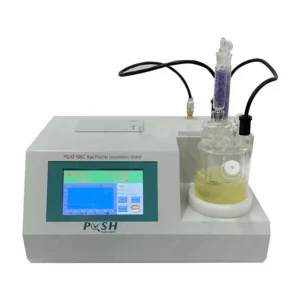When using a sweep frequency response analyzer (SFRA), especially in high-voltage or industrial environments, several safety precautions should be followed to protect personnel and equipment.
Here are important safety guidelines to consider:
- Training and Qualifications:
- Ensure that personnel operating the SFRA are properly trained, qualified, and experienced in its use and the specific testing procedures.
- Safety Equipment:
- Wear appropriate personal protective equipment (PPE), including safety glasses, gloves, insulated footwear, and flame-resistant clothing. The PPE should be rated for the expected voltage levels and environment.
- Insulation and Barriers:
- Use appropriate insulating materials and barriers to maintain a safe distance from high-voltage components or equipment during testing. Insulate yourself from contact with live conductors.
- Safe Access:
- Ensure safe access to the testing area and equipment. Follow established work permits and safety procedures for accessing high-voltage or confined spaces.
- De-energization:
- Before conducting SFRA testing, confirm that the equipment under test is de-energized and properly isolated from the power source. Implement lockout/tagout procedures to prevent accidental energization.
- Grounding:
- Establish proper grounding for equipment and personnel to provide a safe path for fault currents and to prevent electrical shock.
- Environmental Conditions:
- Consider environmental factors such as weather conditions and temperature when conducting SFRA tests. Extreme conditions can impact safety and accuracy.
- Testing Enclosures:
- Use specially designed enclosures or cabinets for SFRA testing to protect personnel from exposure to high-voltage components.
- Safe Testing Sequence:
- Follow a predefined and safe testing sequence to minimize risks. Ensure that equipment is powered down and grounded before connecting the SFRA.
- Instrument Calibration:
- Regularly calibrate the SFRA to maintain accurate measurements. Follow manufacturer recommendations for calibration intervals and procedures.
- Emergency Response Plan:
- Have a well-defined emergency response plan in place in case of accidents or unexpected events. Ensure that all personnel know how to respond to various emergency scenarios.
- Qualified Supervisor:
- When performing SFRA tests, have a qualified supervisor present who can make decisions related to safety and testing procedures.
- Testing in Stages:
- When conducting SFRA tests, work in stages, progressively increasing the test voltage while monitoring for any unusual responses. This helps detect potential issues without causing damage or hazards.
- Post-Test Verification:
- After testing, verify that the equipment remains de-energized and properly grounded before leaving the testing area.
- Compliance with Standards:
- Ensure that the SFRA testing process adheres to industry standards and regulations specific to the equipment being tested.
The safety of personnel and the integrity of equipment are of paramount importance when conducting SFRA tests, especially in high-voltage or industrial environments. Adhering to safety precautions and guidelines is essential for the well-being of all involved and for accurate, reliable testing results.
What are the common issues and faults that SFRA can identify in transformers?
Sweep Frequency Response Analysis (SFRA) is a powerful tool for identifying various issues and faults in transformers.
Some common issues and faults that SFRA can help identify include:
- Winding Deformation: SFRA can detect winding deformation, which may result from mechanical stresses, short-circuits, or other issues. Changes in the transformer’s mechanical structure can impact the response curve.
- Core Movement: Movements in the transformer core can lead to changes in the response curve, which SFRA can detect. Core issues may result from mechanical forces, temperature variations, or transportation.
- Loose Connections: Loose electrical connections within the transformer, such as tap changers or bushings, can lead to changes in the response curve. SFRA can help identify these issues, which may require tightening or maintenance.
- Shorted Turns: Shorted turns can occur within the transformer windings, causing changes in the response curve. SFRA is sensitive to these variations, making it an effective tool for detection.
- Insulation Issues: Problems with insulation, such as moisture ingress, aging, or contamination, can be detected through changes in the response curve. SFRA helps identify insulation-related faults that may require maintenance.
- Bushing Problems: Issues with bushings, including capacitance and inductance imbalances, can affect the response curve. SFRA can pinpoint deviations, highlighting potential problems with the bushings.
- Internal Faults: Internal faults, such as partial discharge, sweep frequency response analyzer arcing, or corona, can result in changes in the response curve. SFRA can serve as an early warning system for internal issues that may require further investigation.
- Parallel Path Problems: Irregularities in parallel paths, such as parallel windings or magnetic shields, can affect the response curve. SFRA can help detect inconsistencies and guide corrective measures.
- Core Saturation: Core saturation can occur when the transformer operates outside its normal operating range. SFRA can identify this issue by detecting variations in the response curve under different excitation levels.
- Turns Ratio Changes: Changes in the turns ratio due to winding faults can be detected through variations in the response curve. SFRA can help identify shifts in the transformer’s turns ratio.
- Flux Path Distortions: Distortions in the magnetic flux path, such as those caused by physical damage or misalignment, can lead to deviations in the response curve. SFRA can help pinpoint these irregularities.
- Dissolved Gas Analysis (DGA) Correlation: SFRA results can be correlated with DGA data to enhance the diagnostic capabilities. Changes in the response curve may align with specific gas concentration changes that indicate problems within the transformer.
- Transportation-Related Issues: Transformers may experience mechanical stresses during transportation. SFRA can help identify any deviations in the response curve that result from transportation-induced problems.
Identifying these issues and faults early through SFRA allows for proactive maintenance and corrective actions, ultimately preventing potential transformer failures and ensuring the reliable operation of electrical systems. It is a valuable tool for assessing transformer health and performance.
